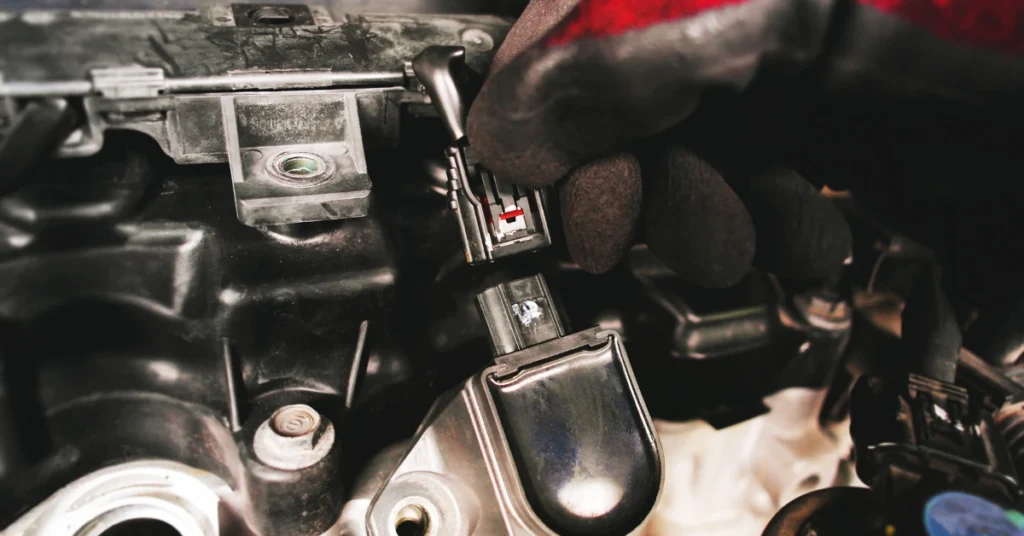
The P0300 Mercedes error code in vehicles is a generic code that indicates a random misfire in the engine’s cylinders. It is a common issue that can occur in various Mercedes-Benz models, such as C-Class, E-Class, S-Class, GLC, and more.
When this code appears, it is essential to address the underlying problem promptly to prevent further damage to the engine.
Contents
- 1 Understanding the P0300 Mercedes Error Code
- 2 Causes of the P0300 Error Code in Mercedes Vehicles
- 3 Diagnosing and Resolving the P0300 Error Code
- 4 Preventive Measures to Avoid the P0300 Error Code
- 5 FAQ
- 5.1 Q: What does the P0300 error code indicate in Mercedes vehicles?
- 5.2 Q: Which Mercedes-Benz models can experience the P0300 error code?
- 5.3 Q: What are some common causes of the P0300 error code in Mercedes vehicles?
- 5.4 Q: How can the P0300 error code be diagnosed and resolved in a Mercedes vehicle?
Understanding the P0300 Mercedes Error Code
The P0300 code is triggered when the engine control unit (ECU) detects a misfire in multiple cylinders of the Mercedes vehicle. A misfire occurs when the air-fuel mixture in the combustion chamber fails to ignite properly, resulting in an incomplete combustion process.
This can lead to poor engine performance, reduced fuel efficiency, and increased emissions.
Causes of the P0300 Error Code in Mercedes Vehicles
Faulty Ignition System

A malfunctioning ignition system can be a common cause of misfires in Mercedes vehicles. Components such as spark plugs, ignition coils, or ignition cables may become worn or faulty over time.
Regular inspection and replacement of these components, as recommended by the manufacturer, can help prevent misfires.
Fuel System Issues
Problems with the fuel system, including fuel injectors, fuel pressure regulators, or fuel pumps, can disrupt the proper fuel delivery to the cylinders. This can result in misfires and other engine performance issues. Regular maintenance and fuel system checks are necessary to avoid such problems.
Vacuum Leaks
Unmetered air entering the engine through vacuum leaks can disturb the air-fuel ratio, leading to misfires. It is essential to carefully inspect the vacuum lines and intake manifold for any signs of leaks or damage.
Addressing any leaks promptly by replacing or repairing the affected components can help prevent misfires.
Engine Mechanical Problems
Engine mechanical issues, such as low compression, worn piston rings, or damaged valves, can affect the combustion process and result in misfires. Proper engine maintenance and regular servicing can help identify and address these problems before they lead to misfires.
Faulty Sensors
Malfunctioning sensors, such as the oxygen sensor or crankshaft position sensor, can provide incorrect data to the ECU, resulting in misfire detection. Thorough diagnostics using specialized tools can help identify faulty sensors and ensure accurate data transmission to the ECU.
Diagnosing and Resolving the P0300 Error Code
When facing the P0300 code in a Mercedes vehicle, it is recommended to follow these steps for diagnosis and resolution:
Scan for Additional Error Codes
Perform a comprehensive scan of the vehicle’s ECU using a reliable diagnostic tool to check for any additional error codes. This will help identify any underlying issues that may be contributing to the misfires.
Inspect Ignition System Components
Thoroughly inspect the ignition system components, including spark plugs, ignition coils, and ignition cables. Replace any worn or faulty parts to ensure a healthy ignition system. It is important to follow the manufacturer’s recommendations for replacement intervals.
Check Fuel System
Test the fuel pressure using a fuel pressure gauge to ensure it meets the manufacturer’s specifications. Inspect the fuel injectors for clogs or leaks and replace them if necessary. Consider cleaning the fuel system as part of routine maintenance to prevent fuel delivery issues.
Inspect for Vacuum Leaks
Perform a visual inspection of the vacuum lines and intake manifold for any signs of leaks or damage. Using a smoke machine can help identify hard-to-detect leaks.
Address any leaks promptly by replacing or repairing the affected components to maintain a proper air-fuel ratio.
Verify Engine Mechanical Condition

Conduct a compression test to evaluate the engine’s mechanical condition. Low compression in any cylinder may indicate internal engine problems that require immediate attention. Regular engine maintenance and servicing can help prevent such issues.
Check Sensor Functionality
Test the functionality of various sensors, such as the oxygen sensor and crankshaft position sensor. Replace any malfunctioning sensors to ensure accurate data transmission to the ECU. Specialized diagnostic tools can assist in identifying faulty sensors.
Clear Error Codes and Test Drive
After addressing the identified issues, clear the error codes using the diagnostic tool. Take the vehicle for a test drive to ensure the misfire issue has been resolved. If the P0300 code does not reappear, the problem is likely resolved.
Preventive Measures to Avoid the P0300 Error Code
To minimize the chances of encountering the P0300 error code in your Mercedes vehicle, consider the following preventive measures:
- Adhere to the recommended maintenance schedule provided by the manufacturer. Regular maintenance can help detect and address potential issues before they lead to misfires.
- Regularly replace spark plugs and ignition system components as per the specified intervals. This ensures a healthy ignition system and reduces the risk of misfires.
- Use high-quality fuel and ensure proper fuel system maintenance. Clean fuel injectors and regular fuel system checks can prevent fuel delivery issues that may cause misfires.
- Keep the intake manifold and vacuum lines clean and free from debris. Regular inspection and cleaning can prevent vacuum leaks and maintain the proper air-fuel ratio.
- Avoid harsh driving conditions and excessive idling that can contribute to engine problems. Smooth driving and proper warm-up periods can help maintain engine performance and prevent misfires.
By following these preventive measures and promptly addressing any issues that may arise, you can minimize the likelihood of encountering the P0300 error code in your Mercedes-Benz vehicle.
FAQ
Q: What does the P0300 error code indicate in Mercedes vehicles?
The P0300 error code indicates a random misfire in the engine’s cylinders.
Q: Which Mercedes-Benz models can experience the P0300 error code?
A: The P0300 error code can occur in various Mercedes-Benz models, including C-Class, E-Class, S-Class, GLC, and more.
Q: What are some common causes of the P0300 error code in Mercedes vehicles?
A: Common causes of the P0300 error code include faulty ignition system components, fuel system issues, vacuum leaks, engine mechanical problems, and faulty sensors.
Q: How can the P0300 error code be diagnosed and resolved in a Mercedes vehicle?
A: To diagnose and resolve the P0300 error code, it is recommended to scan for additional error codes, inspect ignition system components, check the fuel system, inspect for vacuum leaks, verify engine mechanical condition, check sensor functionality, clear error codes, and test drive the vehicle after addressing the identified issues.



